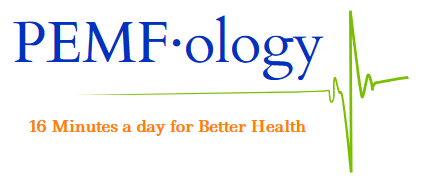Pulsed Electromagnetic Field Stimulation of Bone Healing and Joint Preservation
Summary
In 1979, the US FDA approved PEMF as a safe and effective treatment for nonunions of bone. Since then, the use of PEMF stimulation for bone repair has grown both in the United States and in Europe. In the United States, a survey showed that 72% of hospitals offer bone repair stimulation treatments for fractures that fail to heal. Analogous to pharmacodynamics as a key step in drug adoption, PEMF dose-response effects provide a solid conceptual basis for clinical use. The local field of biological activity, as opposed to systemic effects, represents a notable advantage of PEMF together with a lack of negative adverse effects in relation to its efficacy.
Despite its clinical use, the mechanisms of action of electromagnetic stimulation of the skeleton have been elusive, and PEMF has been viewed as a “black box.” In the past 25 years, research has been successful in identifying cell membrane receptors and osteoinductive pathways as sites of action of PEMF and provides a mechanistic rationale for clinical use. Understanding of PEMF membrane targets, and of the specific intracellular and extracellular pathways involved, culminating in the synthesis of ECM proteins and reduction in inflammatory cytokines, should enhance confidence in the clinical use of PEMF and the identification of clinical conditions likely to be affected by PEMF exposure.
The biological effects of PEMF treatment and favorable effects on the skeletal system are the result of notable research efforts conducted internationally by the orthopaedic community, and they have attracted much interest from other medical specialties such as wound and tendon healing, rheumatology, and neurology that may be able to take advantage of the experiences developed with bone and cartilage treatments.
The US FDA has approved pulsed electromagnetic fields (PEMFs) as a safe and effective treatment for nonunions of bone. Despite its clinical use, the mechanisms of action of electromagnetic stimulation of the skeleton have been elusive. Recently, cell membrane receptors have been identified as the site of action of PEMF and provide a mechanistic rationale for clinical use. This review highlights key processes in cell responses to PEMF as follows: (1) signal transduction through A2A and A3 adenosine cell membrane receptors and (2) dose-response effects on the synthesis of structural and signaling extracellular matrix (ECM) components. Through these actions, PEMF can increase the structural integrity of bone and cartilage ECM, enhancing repair, and alter the homeostatic balance of signaling cytokines, producing anti-inflammatory effects. PEMFs exert a proanabolic effect on the bone and cartilage matrix and a chondroprotective effect counteracting the catabolic effects of inflammation in the joint environment. Understanding of PEMF membrane targets, and of the specific intracellular pathways involved, culminating in the synthesis of ECM proteins and reduction in inflammatory cytokines, should enhance confidence in the clinical use of PEMF and the identification of clinical conditions likely to be affected by PEMF exposure.
Fresh Fractures and Surgical Osteotomies
Clinical PEMF stimulation is widely applied in both the United States and Europe as a noninvasive and safe therapy to promote bone repair. Considerable level 1 evidence has accumulated, demonstrating clinical efficacy of PEMF exposure in accelerating healing of fresh fractures and osteotomies. Borsalino, in patients undergoing femoral osteotomy, and Mammi, in patients undergoing tibial osteotomy, demonstrated the efficacy of PEMF in promoting bone healing. Fontanesi, in fresh tibial fractures, and Faldini, in femoral neck fractures, reported, respectively, a reduction in time to union and an increase in the percentage of fracture healing in PEMF – stimulated patients compared with controls.
In the United States, PEMF exposure is FDA-approved for the treatment of fracture nonunions. Considerable clinical evidence supports the use of PEMF for nonunions with reported healing rates for nonunions after PEMF stimulation between 73% and 85%. Hinsenkamp et al reported a success rate above 70% in a European multicenter study including 308 patients. Traina et al achieved higher success rates (87.8% versus 69%) and shorter healing time with PEMF stimulation compared with surgery in nonunions of at least 9 months from trauma. Notably, in the PEMF group, the presence of infection did not negatively affect the effectiveness of the stimulation. In a Spanish retrospective cohort study of tibial nonunions, Cebriàn et al reported a healing rate of 91% in the PEMF-stimulated group compared with 83% of the control group. Recently, in a study of 1,382 patients with fracture nonunions, Murray and Pethica showed that patients who used PEMF stimulation for 9 hours or more per day healed 76 days earlier than patients who used PEMF stimulation for 3 hours or less per day. In a prospective randomized controlled study, Shi et al reported that early application of PEMF notably increased union rates in patients with long-bone delayed unions. Cost-benefit analysis appeared to justify early PEMF application for fractures that are likely to require a long time to heal.
Keywords; PEMF, Pemf Therapy, Bemer, Bemer Therapy, bone regenration, bone healing, bone trauma, healing bone trauma
References
1. De Mattei M, Fini M, Setti S, et al.: Proteoglycan synthesis in bovine articular cartilage explants exposed to different low-frequency low-energy pulsed electromagnetic fields. Osteoarthritis Cartilage 2007;15:163-168.
- 2. Parate D, Franco-Obregon A, Frohlich J, et al.: Enhancement of mesenchymal stem cell chondrogenesis with short-term low intensity pulsed electromagnetic fields. Sci Rep 2017;7:9421.
- 3. Aaron RK, Ciombor DM, Keeping H, Wang S, Capuano A, Polk C: Power frequency fields promote cell differentiation coincident with an increase in transforming growth factor-beta(1) expression. Bioelectromagnetics 1999;20:453-458.
See more in full article…
